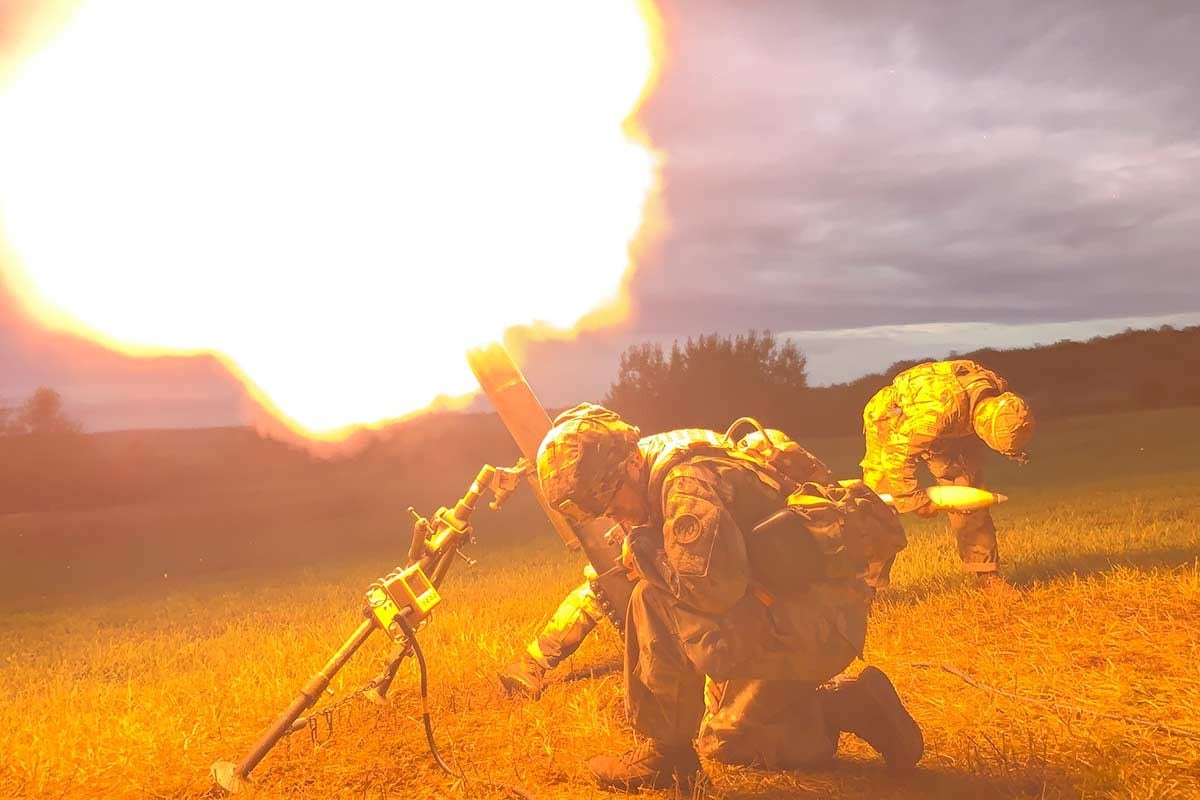Most of the attention for Army weapons changes has been focused in recent years on the Next Generation Squad Weapon, with versions that will replace both the M4 and the M249 Squad Automatic Weapon.
But with increased firepower on all sides and more threats to handle than ever, the Army is working on improving hand grenades and shoulder-fired rockets, and finally finding a fix for the pesky problem of hitting enemy troops under cover.
Some of the ongoing efforts, and new details, were revealed April 7 during the Maneuver Capabilities Development and Integration Directorate’s industry days at the Maneuver Center of Excellence at Fort Benning, Georgia.
RELATED

First off, a problem that’s been lingering for more than a decade but was put at the top of the priority list late last year — counter-defilade.
Right now, the best a soldier or Marine can do when enemy fire is coming from out of hand grenade range and behind a barrier is to hope for an airstrike to arrive quickly.
Col. Rhett Thompson, director of the Soldier Requirements Division at MCDID, told attendees that the biggest problem remains getting a counter-defilade weapon into the hands of soldiers at the squad level.
The new approach, which has replaced the cancelled XM25 program, is dubbed the Precision Grenadier System.
This is a “flat velocity, high-velocity multi-shot weapons system,” presenters said, which has “firefight-ending lethality and precision” when compared with the current M203 and M320 grenade launcher systems.
They want it to arm and strike at distances of 35 meters all the way out to 500 meters. To do that, it will need to be programmable, so soldiers can sight in the threat and tell the munition when to fire, much like tanks and other combat vehicles can do with certain munitions now, only in a much smaller package.
“The real sweet spot is the 300m range band,” Kennedy said. “And we’re looking to do that in less than 15 seconds.”
Out farther than the 500m maximum range, or even around urban corners, the Army wants an armed drone that is more sophisticated than what they have now for squad level, beyond-line-of-sight counter defilade.
Lt. Col. Christopher Kennedy, lethality branch chief for SRD, said Army leadership wants more than the existing Lethal Miniature Aerial Missile System, or LMAMs.
The system has to be returnable, reusable, Kennedy said he was told.
“That sounds like armed Unmanned Aircraft Systems at the squad level,” Kennedy said.
While there are some good fixed-wing options for simply striking a target, especially the “suicide drone” options such as LMAMs. They don’t fit into every scenario.
“Think about urban, heaven forbid a megacity,” he said. “Fixed-wing moves too fast to engage targets we need to engage.”
Rotary wing systems can fly over, do persistent sitting and staring, and get to the backside of buildings and terrain features.
He added that it would be helpful to have embedded software that would allow the drone to lock onto a human target without someone having to fly it.
Basically, the operator establishes the target, then the drone goes and finds it and follows it, he said.
But grenade launchers and squad-level armed drones are not the only non-rifle solution for soldiers at the tactical level.
Kennedy’s team is also looking to vastly improve shoulder-launched missiles, putting much more capability into a single package.
Currently, soldiers have almost too many options.
The M141 Bunker Defeat Munition, a disposable, single-shot, 83mm rocket, can take out field fortifications such as bunkers and urban structures, that range from 8-inch reinforced concrete to 12-inch triple brick walls.
Then there’s the M72 Light Anti-Armor Weapon, or LAW, a disposable 66mm rocket in use since the early 1960s, the AT-4, and upgraded variants of the 84mm, single shot, disposable, unguided anti-tank weapon.
Over the next seven years, the Army expects to have a single shoulder-fired rocket that can defeat all of the threats the old trio of rocket options handled.
Soldiers will be able to fire that rocket, the Individual Assault Munition, from a confined space, strike at multiple targets, have a better hit probability and lethality, reach the farthest ranges of the current rockets, about 500m, and do it all while weighing less than 15 pounds.
By about 2030, the Army expects to go a few steps further, with the Next Generation Squad Multi-Target Munition that can do all of what the IAM can do but also hit targets in defilade and reach ranges of up to 1,000m.
Todd South has written about crime, courts, government and the military for multiple publications since 2004 and was named a 2014 Pulitzer finalist for a co-written project on witness intimidation. Todd is a Marine veteran of the Iraq War.




